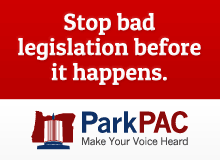Answer: Both approaches are incorrect, as they do not comply with 90.610and 90.155for proper rule changes. This is exceeding risky, since, in my opinion, it creates the potential tenant argument that not being effectively enacted means the new rule is not enforceable. Any legal action to enforce a violation of an improperly enacted rule would be a nullity.
Below is the correct procedure in adopting new rules. It should not be varied from or ignored without first discussing with legal counsel:
- The landlord may propose changes in rules or regulations, including changes that make a substantial modification of the landlord's bargain with a tenant.
- It should be by written notice and served as described in 90.155.
- Unless tenants of at least 51 percent of the "eligible spaces"[1]in the community object in writing within 30 days of the date the rule change notice was served, the change shall become effective for all tenants of those eligible spaces on a date not less than 60 days after the date that the notice was properly served by the landlord.
- One tenant of record per eligible space may object to the rule or regulation change through either: (i) A signed and dated written communication to the landlord; or (ii)A petition format that is signed and dated by tenants of eligible spaces and that includes a copy of the proposed rule or regulation and a copy of the notice.
- If a tenant of an eligible space signs botha written communication to the landlord and a petition, or signs more than one written communication or petition, only the latest signature of the tenant may be counted.
- Aproxy may be used only if a tenant has a disability that prevents them from objecting to the rule or regulation change in writing.
- The landlord's notice of a proposed change in rules or regulations must be given or served as provided in 90.155and must include: (i) Language of the existing rule or regulation and the language that would be added or deleted by the proposed rule or regulation change; and (ii) A statement substantially in the following form, with all blank spaces in the notice to be filled in by the landlord:
______________________________________________________________________________
(MHCO FORM 60) NOTICE OF PROPOSED RULE
OR REGULATION CHANGE
The landlord intends to change a rule or regulation in this facility.
The change will go into effect unless tenants of at least 51 percent of the eligible spaces object in writing within 30 days. Any objection must be signed and dated by a tenant of an eligible space.
The number of eligible spaces as of the date of this notice is:_____. Those eligible spaces are (space or street identification):___________________________.
The last day for a tenant of an eligible space to deliver a written objection to the landlord is _________ (landlord fill in date).
Unless tenants in at least 51 percent of the eligible spaces object, the proposed rule or regulation will go into effect on _________.
The parties may attempt to resolve disagreements regarding the proposed rule or regulation change by using the facility's informal dispute resolution process.
______________________________________________________________________________
- A good faith mistake by the landlord in completing those portions of the notice relating to the number of eligible spaces that have tenants entitled to vote or relating to space or street identification numbers does not invalidate the notice or the proposed rule or regulation change.
- After the effective date of the rule or regulation change (i.e. "a date not less than 60 days after the date that the notice was served by the landlord"), when a tenant continues to engage in an activity affected by the new rule or regulation to which the landlord objects, the landlord may give the tenant a notice of termination of the tenancy pursuant to ORS 90.630.
- The notice shall include a statement that the tenant may request a resolution through the facility's informal dispute resolution process by giving the landlord a written request within seven (7) days from the date the notice was served.
- If the tenant requests an informal dispute resolution, the landlord may not file an action for possession (i.e. eviction action) until 30 days after the date of the tenant's request for informal dispute resolution or the date the informal dispute resolution is complete, whichever occurs first.
- NOTE: Informal dispute resolution does not apply to disputes relating to:
- Facility closure;
- Facility sale; or
- Rent, including but not limited to amount, increase and nonpayment.
- NOTE: Requiring a landlord to provide a Statement of Policy, do not create a basis for a tenant to demand informal dispute resolution of a rent increase.
[1]An "eligible space" means each space in the community as long as: (a) It is rented to a tenant and the tenancy is subject to ORS 90.505 to 90.850 (the manufactured housing section of the landlord-tenant law); and (b) The tenant who occupies the space has not: (i) Previously agreed to a rental agreement that already includes the proposed rule or regulation change; or (ii) Become subject to the proposed rule or regulation change as a result of a change in rules or regulations previously adopted under ORS 90.610.
